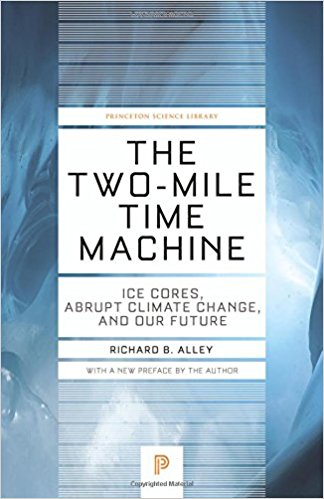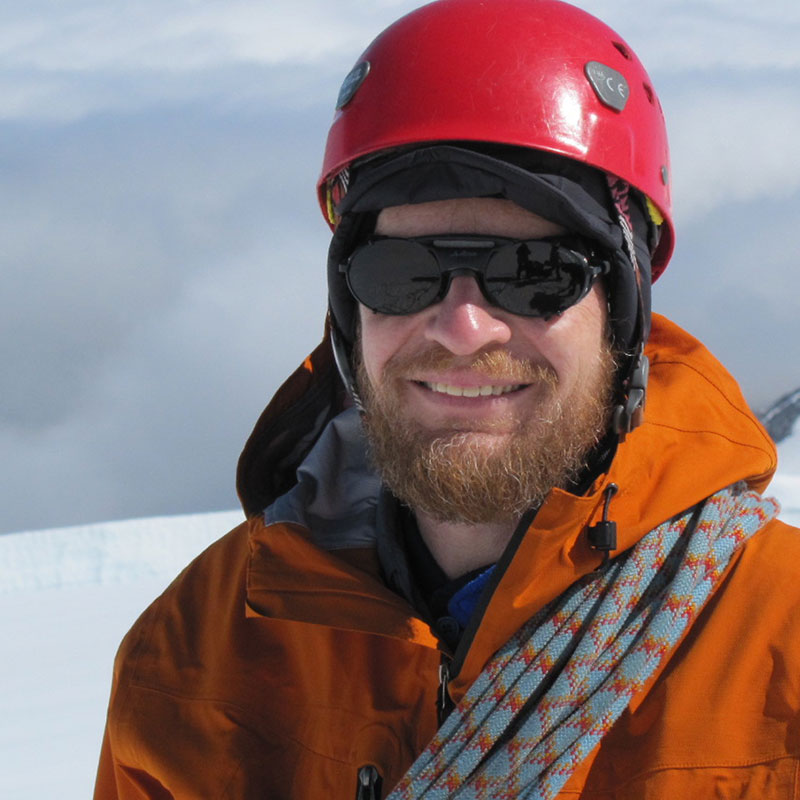Richard Alley
2018 Distinguished Explorer
Richard Alley has been named the recipient of the 2018 Roy Chapman Andrews Society Distinguished Explorer Award. Alley is an internationally renowned geologist, glaciologist and science communicator, whose discoveries have led to ground-breaking advances in the understanding of rapid climate change and the stability of polar climates. As a lead author of the Fourth Assessment Report of the United Nations Intergovernmental Panel on Climate Change, Alley and his team shared the 2007 Nobel Prize with Al Gore. A dynamic and engaging speaker, he has been described by Andy Revkin of the New York Times as “a cross between Woody Allen and Carl Sagan.”
 During numerous expeditions to Greenland, Antarctica, and Alaska, Alley has studied glaciers and conducted coring measurements on ice sheets that reveal the nature of ancient climates. This research has demonstrated that climate changes larger than any experienced by human civilizations have occurred repeatedly in the past, sometimes transitioning as quickly as a decade or even a single year. These discoveries formed the basis for one of Alley’s popular books, The Two-Mile Time Machine: Ice Cores, Abrupt Climate Change, and Our Future, which won the Phi Beta Kappa Science Book Award.
During numerous expeditions to Greenland, Antarctica, and Alaska, Alley has studied glaciers and conducted coring measurements on ice sheets that reveal the nature of ancient climates. This research has demonstrated that climate changes larger than any experienced by human civilizations have occurred repeatedly in the past, sometimes transitioning as quickly as a decade or even a single year. These discoveries formed the basis for one of Alley’s popular books, The Two-Mile Time Machine: Ice Cores, Abrupt Climate Change, and Our Future, which won the Phi Beta Kappa Science Book Award.
 Alley shares the passion Andrews had as a communicator about science and discovery. He has authored more than 350 scientific publications, including books and popularizations, and given more than 1000 public lectures. Alley is the author of Earth: The Operators’ Manual, which led to the critically acclaimed PBS television mini-series that he hosted in 2011. The show was intended to leave viewers “informed, energized, and optimistic” about Earth’s environmental problems and potential solutions. For this and other public engagement activities, Alley received the Schneider Award for Science Communication.
Alley shares the passion Andrews had as a communicator about science and discovery. He has authored more than 350 scientific publications, including books and popularizations, and given more than 1000 public lectures. Alley is the author of Earth: The Operators’ Manual, which led to the critically acclaimed PBS television mini-series that he hosted in 2011. The show was intended to leave viewers “informed, energized, and optimistic” about Earth’s environmental problems and potential solutions. For this and other public engagement activities, Alley received the Schneider Award for Science Communication.
Alley’s scientific service work has also extended to government, featuring presentations to United States government officials in multiple administrations, including the Vice President, the President’s Science Advisor, and multiple Senate and House Committees.



 Presentation by Richard Alley, 2018 Distinguished Explorer
Presentation by Richard Alley, 2018 Distinguished Explorer